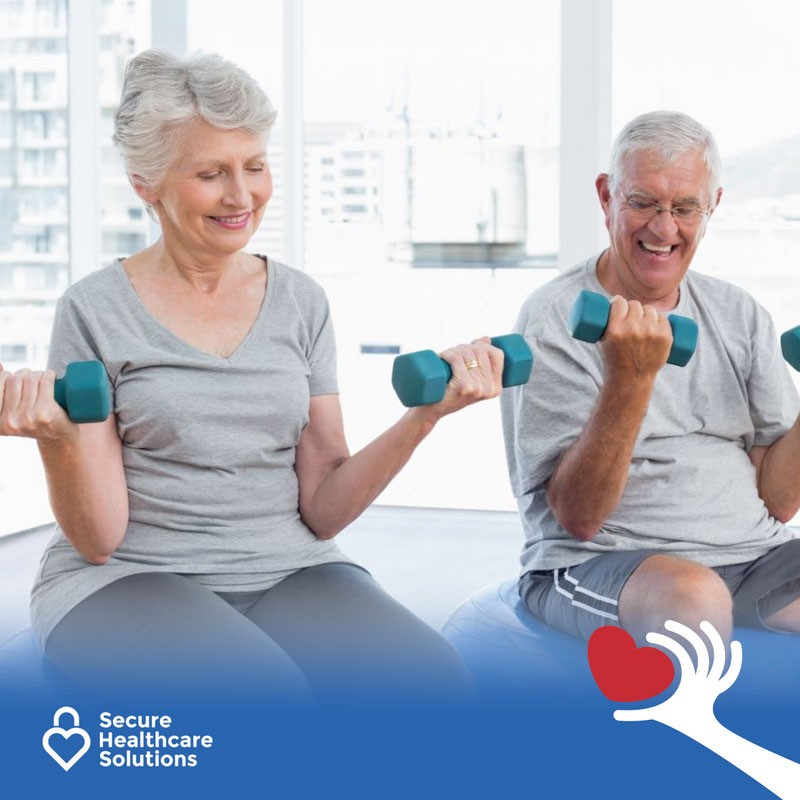
What do you think of when you picture older people in care? Are they seated? Watching TV? Probably.
Despite what our preconceived ideas are of elderly people, the truth is that physical activity and exercise is important for people of all ages. If someone has an age-related health problem, they may be put off exercise, but staying active may actually be the key to maintaining health and independence for them.
According to the NHS, many adults aged 65 and over spend, on average, 10 hours or more each day sitting or lying down, making them the most sedentary age group. This inactivity makes them at risk to higher rates of falls, obesity, heart disease and early death compared with the general population.
Why is exercise important?
If you do not stay active, even into old age, all the things you’ve always enjoyed doing and taken for granted may start to become harder. There’s evidence that people who remain active have a lower risk of heart disease, stroke, type 2 diabetes, some cancers, depression and dementia.
According to the Care Workers Charity, exercise can also improve the strength and tone of your muscles, meaning you’re less likely to have an accident or a fall and injure yourself. As well as these benefits, regular exercise can help our ability to continue with everyday activities, can keep your brain functioning and can affect your sense of wellbeing and self-esteem.
Importantly for older people, exercise can help sustain social connections. Whether that’s an exercise class at the local leisure centre or a regular walk in the park with a friend, reinforcing social bonds is a vital component of good health in later years.
Studies have shown that regular exercise can add 3-5 years to life expectancy figures, and not only does it add years but improves the quality of those years.
How can I get started?
The NHS adds that if you’ve not done much physical activity for a while, and are part of the older population, you may want to get the all-clear from a GP before starting.
Aim to do about 30 minutes of moderate exercise a day, along with some muscle strengthening activities. During moderate exercise, your breathing and heart rate are faster and you feel warmer.
If you’re just getting started, take it easy at first and gradually increase how much activity you do to build up your fitness. The most important thing is to spend as little time as possible being inactive.
If you’re already regularly active, you could try doing 75 minutes of vigorous exercise spread over the week. This is the type of activity where your breathing is much deeper and rapid, and your heart rate increases quickly. Or you could do a combination of moderate and vigorous activity.
If you struggle to exercise on your feet due to a long-term illness, it’s even more important to try to exercise. Exercise can improve your mood and is really beneficial for your mental health. Chat to a professional about what the best sort of exercise is for you.
Chair exercises
For elderly people, these NHS recommended gentle sitting exercises can help to improve your mobility and prevent falls, and can even be done at home.
For these exercises, choose a solid, stable chair that doesn’t have wheels. You should be able to sit with your feet flat on the floor and knees bent at right angles. Avoid chairs with arms, as these will restrict your movement.
Chest stretch
• Sit upright and away from the back of the chair. Pull your shoulders back and down. Extend your arms out to the side.
• Gently push your chest forward and up until you feel a stretch across your chest.
• Hold for 5 to 10 seconds and repeat 5 times.
Upper-body twist
• Sit upright with your feet flat on the floor, cross your arms and reach for your shoulders.
• Without moving your hips, turn your upper body to the left as far as is comfortable. Hold for 5 seconds.
• Repeat on the right side.
• Do 5 times on each side.
Hip marching
• Sit upright and do not lean on the back of the chair. Hold on to the sides of the chair.
• Lift your left leg with your knee bent as far as is comfortable. Place your foot down with control.
• Repeat with the opposite leg.
• Do 5 lifts with each leg.
